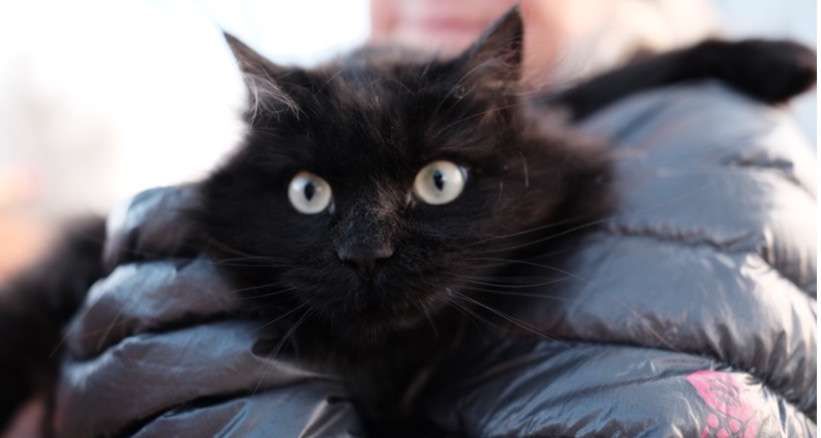
Kitten Rescue Story
As animal advocates, my husband and I run a small rescue farm where we take care of 15 furry and feathery friends. While juggling our responsibilities as full-time working parents with two young children, we were also keeping an eye on a feral black cat visiting our property. Although many of our friends and family believed we had already taken on too much responsibility, some of them suggested that we should try to rescue this black feral cat. As animal lovers, we once again faced a familiar, and challenging, thought process of deciding when and how to intervene, while also pondering how this could impact our mental health.
It is important to understand and discuss burnout among animal advocates, as animal activism and rescuing can be emotionally difficult, and sometimes draining. Burnout and discouragement are common among dedicated advocates, and self-care strategies are essential to avoid them. These include taking breaks from social media and the news, connecting with other animal advocates for support, and prioritizing self-care activities, like exercise and meditation. Recognizing progress and small wins can also help avoid the feeling of being overwhelmed or discouraged, although the feeling of guilt and wanting to do more is always present.
In the winter of 2022, we noticed that a tiny kitten was following the feral black cat, and with temperatures dropping in Utah, we quickly made them a shelter out of a repurposed insulated box. We installed a remote camera to check on them and placed food and water next to their shelter daily. We were grateful for the camera when a raccoon came to check on the food and box one night, and we then decided to remove the food every evening to avoid attracting predators.
As days passed, I spent more and more time every evening next to the box, talking to the kitten and letting her get used to me. After three weeks, the kitten, whom I named Charlotte, started meowing at me from a distance when I would feed the chickens. The mother came less and less to check on her kitten, and when she stopped coming altogether, the temperature was reaching 14 degrees Fahrenheit (-10 degrees Celsius) at night, so we bought an outdoor heating pad to keep Charlotte warm and safe. I would check the camera videos first thing every morning, anxious to verify that Charlotte had made it through the night.

Picture of my friend helping me around the farm the week we caught Charlotte.
After a lot of deliberation, we decided that we needed to act. Fortunately, a visiting friend, and fellow animal rescuer, was able to catch Charlotte! We put her in a bathroom to keep her separated from our other indoor animals in case she was carrying anything that could be harmful to them. After a few days, we took her to a vet, who assessed her as a healthy female kitten, despite being infested with worms. We got her dewormed, vaccinated, chipped, and spayed before bringing her back home. Spaying and neutering are extremely important to help control the population of stray and feral animals and were important to prevent us from having the same kitten situation in a few months!

Picture of Charlotte quarantined in our bathroom.
Friends started asking us what we would do with Charlotte and if we would find her a new home. The longer she stayed with us, the more we and our children got attached to our new fluffy housemate. Although it was yet another difficult decision, we eventually decided to keep her, as I wanted her to have unlimited access to the outdoors where she was born. As animal advocates, we believe in rescuing animals and providing them with a forever home, and Charlotte is now a permanent resident of our rescue farm. We like to tell people that she is protecting our chickens from predators, and it makes them smile.

Charlotte getting used to life with a toddler.
Follow us on LinkedIn for the latest updates on all things happening here at BSM Partners.
About the Author
Émilie Mesnier's passion for pets ignited during a 2007 internship in palatability research and has propelled her ever since. A French-trained food scientist, she now blends two decades of global know-how—nutrition, marketing, sustainability, animal welfare and international growth—into one goal: better foods and lives for animals. A lifelong learner who has absorbed insights from 80-plus business books on strategy and continuous improvement, Émilie turns ideas into action every day. After 16 years in the US and running a small farm animal rescue sanctuary in Utah, Emilie moved children, husband and two senior pets back to France in early 2025 to bring BSM Partners’ full suite of consulting services closer to clients across the European market.
This content is the property of BSM Partners. Reproduction or retransmission or repurposing of any portion of this content is expressly prohibited without the approval of BSM Partners and is governed by the terms and conditions explained here.